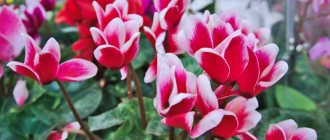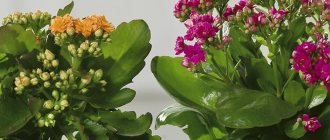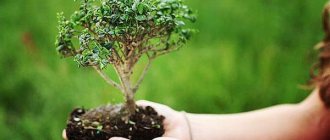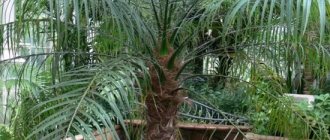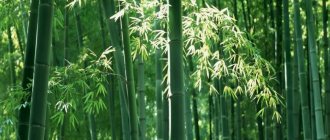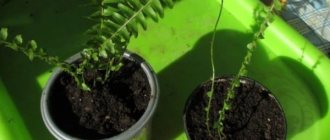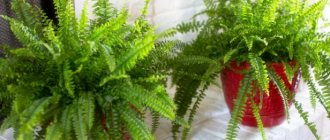Phalaenopsis is probably the most popular orchid among amateur gardeners. There is nothing surprising here - after all, the diversity of species and hybrid varieties in this genus is amazing. This same circumstance significantly complicates the choice for people just starting to create their own personal collections. If you are looking for where to learn about phalaenopsis, want to see photos with the names of varieties, then read this article and be sure to go to the special section of our website - everything is here.
Purchase and adaptation
Select a specimen with elastic leaves, without spots and drying tips. Healthy roots are succulent, green or grayish in color, without rotten or wet areas, the substrate is free of mold.
Newbie homes need to be isolated from your indoor plants. During the first 30 days, monitor it for pests. Water only after drying, when the roots become silvery, and begin feeding a month after purchase. At the end of quarantine, move the flower to a permanent location.
How to determine the type of flower?
Under the generic name you can find plants that are completely different from each other: this name can be worn by either a thin tall stem with a pair of graceful flowers on top, or a lush garland studded with velvety “moths”. The following features will help you distinguish between types and varieties:
- Phalaenopsis are divided into two types according to height: ordinary, whose height is a meter, and miniature, whose dimensions do not exceed 30 cm.
- The color of flowers and even the color of leaves varies from species to species; hybrid varieties allow you to achieve incredible shades inherent in a particular species.
- The number of flowers on one peduncle.
- Some varieties emit pleasant, delicate aromas more intensely than others.
- The shape of a flower is one of the most revealing elements. Flowers have a different number of petals, and their location at the tip of the peduncle is also different.
Temperature
Phalaenopsis orchid is a tropical plant, the suitable average daily temperature for keeping is 20 -25 degrees. To set flower buds, the difference between day and night temperatures should be from 3 to 5 degrees.
Watering and fertilizers
Methods of watering orchids:
- immersion The pot is placed in a container of water;
- spillage around the edges of the pot;
- warm shower.
You can determine that moisture is needed by the color of the roots: when dry, they become silver in color. The substrate must dry completely. Use soft, settled water, otherwise salts will settle on the roots.
You need to make sure that moisture does not get into the growth point, this will provoke the development of diseases. Remove water from the outlet with a dry cloth. How and when to water a flower depends on the growing conditions.
Healthy plants are fertilized, sick and flowering ones are not. After transplantation, do not use fertilizing for a month. Fertilizer preparations are diluted according to instructions and watered well before application so as not to burn the root system.
Varietal features
A large number of varieties of orchids classified in the genus in question are practically incapable of living in a house. But fortunately, there are many flowers adapted to such conditions. There are now about 65 of them.
This is interesting: the name “phalaenopsis”, the species of which (almost all) come from Australia, Indonesia and some regions of Southeast Asia, is translated as “night butterfly”.
In general, the plant is a relatively low herbaceous perennial with very dense leaves, collected at the base and extending directly into the roots. The latter have the ability to collect moisture and nutrients directly from the air. This, however, is not a unique property - many other genera of orchids have it.
The leaf of phalaenopsis is elongated, leathery, and quite hard. During the year, the plant produces flower stalks (sometimes their number reaches six). Depending on the variety, they produce up to 50 buds each. As a rule, the size of the latter is 45 mm, but sometimes they are much larger, less often smaller.
To learn to distinguish phalaenopsis varieties, you will need to study an entire encyclopedia. For a general understanding of the specifics of the type of information, much less is required.
So, the orchids included in it are:
- high (up to 100 cm);
- compact (no more than 30 cm).
Plants are also divided into:
- monochrome (that is, painted in one tone - yellow, white, purple, pink);
- multicolor (combining two or more shades).
Finally, among the plants there are also aromatic varieties.
In the catalogs, varietal phalaenopsis orchids are divided into groups. For home gardeners, the greatest interest is in hybrids, that is, artificially bred and most adapted species.
There are also mini flowers, characterized by their small size and amazing variety of petal shades. Taiwanese phalaenopsis amaze with their splendor - they produce large, intricately colored buds.
The Novelty category includes orchids that need rest after flowering. This group is distinguished by variegated shades, the petals are decorated with patterns and fancy spots.
If varietal phalaenopsis have a very diverse color, then, so to speak, “wild” ones are mostly white. Even striped species are not difficult to find in culture.
The most valuable ones now are:
- tiger orchids;
- black;
- raspberry;
- pearl;
- burgundy;
- blue.
Important: in stores it is not difficult to find plants with pretty blue flowers. Don’t rush to buy them - most likely, the petals are simply artificially colored, which means that after some time the pigment will fade.
Lighting and Humidity
The process of photosynthesis requires light. It is important to choose the optimal lighting intensity. Under natural conditions, representatives of the species grow under the forest canopy, in the shade, and in the direct rays of the sun in summer, leaves and roots can get burned.
When growing tropical beauties at home in winter, special phytolamps are used for additional lighting.
If it is necessary to increase air humidity in the summer heat, or in winter during the heating season, place a container of water next to the plants and use air humidifiers.
Bloom
Phalaenopsis in the wild has its own development cycle. In natural habitats, the rainy season gives way to the dry season, and the time for flowering begins. With proper care indoors, the orchid grows leaves and roots, then a peduncle forms.
To keep it erect, as it grows, it is tied to a support. At this time, the development of the vegetative mass stops; no fertilizing is necessary. The blooming buds show off for several months.
If the peduncle remains green, it should not be cut. The remaining buds can form new shoots.
Differences from other species
The middle type of phalaenopsis can be classified as Multiflora. The orchid has a feature that distinguishes it from other species - while young leaves begin to grow, old leaf blades wither. Also characteristic features include the absence of a growth point, which was mentioned just above.
Flower arrows are also unusual - they have the ability to branch during flowering, forming a large number of shoots with buds.
Transfer
After the end of lush flowering, you can begin the transplantation procedure. Usually the reason is the removal of transport soil or the growth of the root system, the need to replace salted pieces of bark.
To ensure the process of photosynthesis in the roots of the epiphyte, the substrate must be:
- loose;
- moisture-absorbing;
- breathable;
- light.
You can find a ready-made mixture for orchids on sale. The composition includes: the main component is pine bark, sphagnum, charcoal, coconut chips or fiber, peat. If the soil is prepared independently, it is important to consider the following points: the collected bark must be disinfected and the resin and tannins removed from it.
Choosing a pot is another difficult task for a novice gardener. The best option is a transparent container with many holes for water drainage and root aeration.
The assortment on store shelves is presented in the following options:
- plastic transparent pots - simple, with drainage holes;
- colored translucent - the light necessary for the roots penetrates them;
- “crown” system - more suitable as a flowerpot for a pot;
- ceramics or glass - delicate roots grow to the walls, you need to properly regulate the amount of moisture in the soil; this growing method is not recommended for beginners.
During transplantation, the plant is removed very carefully, trying not to damage the fragile roots. Thin threads without velamen, blackened areas are removed with a sterile instrument.
Check to see if there is a plastic cup under the neck; if it is in the way, it should be carefully removed. The roots are distributed in a new pot, the aerial ones are also placed, if possible, and the substrate is added.
And then they simply leave the transplanted plant alone and give it time to adapt. Abundant watering and fertilizing during this period will have a detrimental effect.
Reproduction
The first purchased specimens have taken root in the apartment, they delight us with their flowering, now it’s time to master the techniques of propagating graceful beauties.
In its natural habitat, the ornamental crop reproduces by dusty yellowish seeds. At home, if you have a strong desire and patience, you can take care of flowering plants, carry out pollination yourself, and collect seeds after 5-6 months. Growing seed material is carried out in a prepared sterile environment; the process is complex and lengthy for breeders and advanced collectors.
Other propagation methods:
- children;
- cuttings from flower stalks.
Children appear on the peduncle, on the trunks (if the main growth point has died), between the leaves. The babies are not separated from the mother plant until they have grown several leaves and their own roots to ensure independent life.
After flowering has finished, cuttings are cut from the peduncles. They can be rooted in homemade plastic greenhouses. If successful, the root formation process lasts about a month.
Rejuvenation
In an elongated bush with a large number of aerial roots, the upper part with leaves and roots is cut off with a sharp sterile pruning shears. Leaves are also left on the mother plant; children will develop on the old trunk.
The cut part is dusted with crushed coal or cinnamon, dried, and planted without deepening so that the root collar does not become damp.
A detailed description and step-by-step instructions with photos for propagating the Phalaenopsis orchid can be found on websites for gardeners; it’s easy and exciting.
History of origin
The Multiflora orchid is an exclusively hybrid plant; it is the painstaking work of breeders over many years.
Note: in nature you can find orchids in mountain forests and at the foot of cliffs, enjoying truly unique views.
A wild orchid does not have such a colorful variety of colors compared to a hybrid.
Errors in care
The most common errors:
- watering with cold, hard water;
- frequent watering without breaks for drying;
- choosing the wrong place - lack or excess of lighting, drafts;
- overdoing the application of fertilizers.
After eliminating these errors, the orchids will thank you for your attention with a wave of luxurious flowering.
Flower colors
To determine the name of a varietal orchid of the genus Phalaenopsis by the appearance of a living flower or from a photo, it is worth focusing on the color of the flowers. Shades vary over a very wide range:
- Single color (white, red, yellow, purple, lilac, pink, lilac). Read about the mythical blue shade of phalaenopsis here.
- Multicolor (flowers with stripes, specks, veins, two-color petals).
A beautiful combination is the contrast between the shades of all the petals and the lip of the flower.

